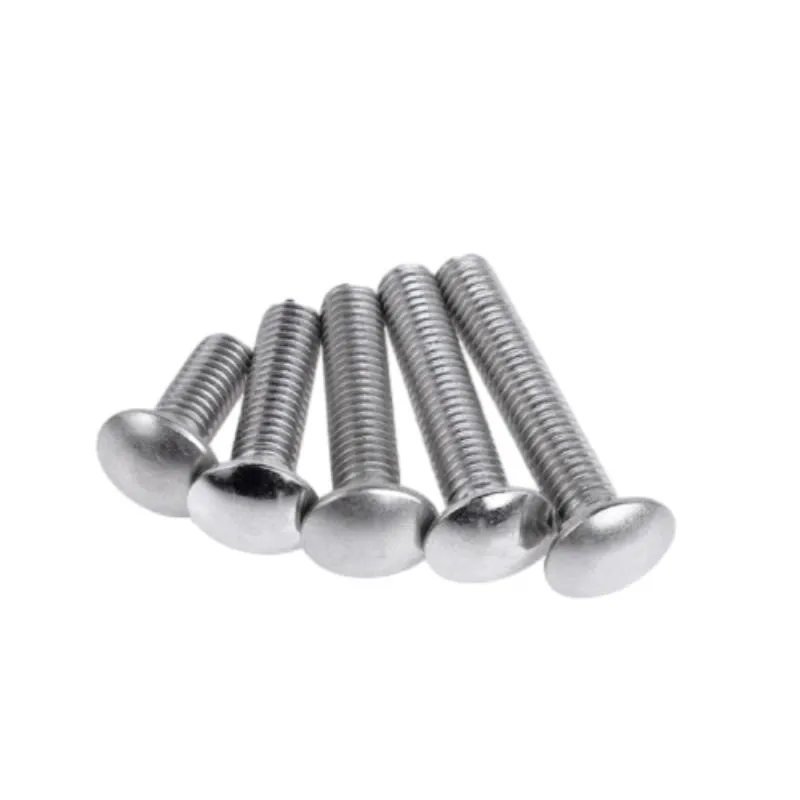Ago . 14, 2024 04:31 Back to list
Detailed Guide to Hex Lock Nut Dimensions for Various Applications and Standards
Understanding Hex Lock Nut Dimensions A Comprehensive Guide
Hex lock nuts are essential fasteners widely used in various industrial applications due to their ability to resist loosening under vibrations and torque. In this article, we will discuss the key dimensions associated with hex lock nuts and why they are critical for ensuring successful assembly and performance in mechanical systems.
What Are Hex Lock Nuts?
Hex lock nuts, often referred to simply as lock nuts, possess a unique design that includes a hexagonal shape allowing for easy manual or mechanical tightening. Unlike standard nuts, hex lock nuts incorporate additional features that prevent them from loosening over time. These features can include nylon inserts, serrated edges, or a distorted thread design, making them ideal for environments with high vibrations.
Key Dimensions of Hex Lock Nuts
Understanding the dimensions of hex lock nuts is crucial for selecting the right fastener for a specific application. Here are some of the critical dimensions you need to be aware of
1. Thread Diameter (Nominal Size) This dimension indicates the diameter of the screw thread that the nut will fit onto. Common diameters range from small sizes like M2 or 1/4” to larger sizes like M30 or 1”. It's essential to choose a nut that matches the thread diameter of the bolt.
2. Width Across Flats (WAF) This measurement is the distance between two opposite sides of the hexagonal nut. It determines the appropriate wrench size needed to grip and tighten the nut. Standard WAF sizes vary, typically ranging from 5mm for smaller nuts to 46mm for larger variants.
hex lock nut dimensions chart

3. Height The height of the nut is the distance measured from the base of the nut to the top. This dimension can affect the overall space taken in the assembly and sometimes influences the strength of the connection.
4. Thread Pitch This characteristic defines the distance from one thread to the next along the screw's length. For metric threads, the thread pitch is expressed in millimeters (e.g., 1.0mm), whereas for imperial threads, it’s often given in threads per inch (e.g., 20 TPI). Choosing the right pitch ensures compatibility with the corresponding bolt.
5. Material Thickness This dimension is significant as it affects the strength and durability of the hex lock nut. Thicker nuts will typically provide better resistance to stripping and deformation under heavy loads.
Selecting the Right Hex Lock Nut
When selecting a hex lock nut, it is crucial to consider the application's specific requirements. Assess factors such as load conditions, environmental exposure, and vibration levels. For environments exposed to extreme temperatures or corrosive elements, opting for materials like stainless steel or brass might be advantageous.
Additionally, ensure compatibility with the corresponding bolt by checking the thread diameter, pitch, and overall size. Using improper dimensions can lead to failure in assembly, increased risk of loosening over time, and ultimately cause operational issues.
Conclusion
Hex lock nuts play a pivotal role in ensuring secure and reliable mechanical connections. Understanding their dimensions is critical for engineers, manufacturers, and DIY enthusiasts alike. By carefully selecting the right hex lock nut based on its dimensions, one can effectively enhance the safety and longevity of their assemblies. Always consult a hex lock nut dimension chart when making selections, as this will guide you in choosing the right fit for your specific application, ultimately leading to greater efficiency and performance in your projects.
-
The Ubiquitous Reach of DIN934 in Application Realms
NewsMay.16,2025
-
Exploring Different Bolt Types
NewsMay.16,2025
-
Cracking the Code of Sleeve Anchor Mastery
NewsMay.16,2025
-
Clamp Design Principles,Types and Innovations
NewsMay.16,2025
-
Artistry Inspired by the Humble Anchor Bolt
NewsMay.16,2025
-
A Deep Dive into Screw Types
NewsMay.16,2025


